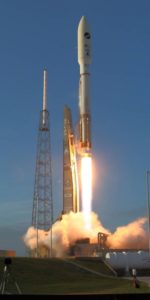
Of the several hundred thousand asteroids known, about 9,000 are of the near-Earth variety, and of these more than 1,300 fall into the category known as potentially hazardous asteroids (PHAs). To qualify as a PHA, an asteroid must be able to come closer to the Earth than 7.5 million kilometers in its orbit and be larger than 100 to 150 meters in diameter. An asteroid of this size, if it impacted in a sensitive area, could cause significant regional devastation, laying waste to a major city or even an entire state.

Unless steps are taken to do something about it, the Earth will be hit hard again in the future. Collisions such as the one that happened 65 million years ago, involving an asteroid roughly 10 kilometers across which slammed into what is now Mexico’s Yucatan Peninsula and contributed to a mass extinction, are extremely rare. However, smaller but still potentially devastating impacts happen much more often. As recently as 1908 an object roughly 50 meters across—either an asteroid or part of a comet nucleus—exploded high above the Tunguska region of Siberia, flattening 80 million trees radially outward from the epicenter of the blast. A similar encounter over a highly populated area would cause massive disruption and loss of life.
Our knowledge of the numbers, sizes, and orbits of PHAs has increased dramatically over the past decade or so thanks to a number of dedicated observing programs, such as the Lincoln Near-Earth Asteroid Research (LINEAR) project and Catalina Sky Survey. The results of the most recent survey of near-Earth objects (NEOs), which includes both comets and asteroids, carried out using NASA’s Wide-Field Infrared Explorer (WISE), suggests that 20 to 30 percent of all PHAs have now been found.
No known asteroids pose an immediate threat to our well-being. Astronomers have devised two different scales to categorize the impact hazard posed by PHAs; the simpler of these, called the Torino Scale, assigns a number from 0 (no threat at all) to 10 (certain impact large enough to threaten the future of civilization) to each body. At present, only two PHAs have a non-zero rating, and both these have a rank of only 1. The highest Torino ranking an asteroid has ever earned was 4 in the case of Apophis, but this was later revised to 0 in the light or more accurate orbit calculations.
Still, there are reasons to be concerned. If a sizeable space rock—say half a kilometer across—were found to be on a direct heading for Earth, with only a couple of decades before impact, what could be done about it? There are two main possibilities: destroy or divert. Blowing up an asteroid, say with nuclear weapons, isn’t necessarily a smart idea. It could result in an armada of smaller chunks, still on a collision course, that could cause just as much damage collectively as a single large strike. That’s why most proposed approaches to the problem focus on altering the trajectory of the intruder sufficiently, over time, so that the danger is averted.

Tune in for part two of this feature.





Excellent illustrations and article.
I really enjoy your posts.
Very interesting and provoking thought